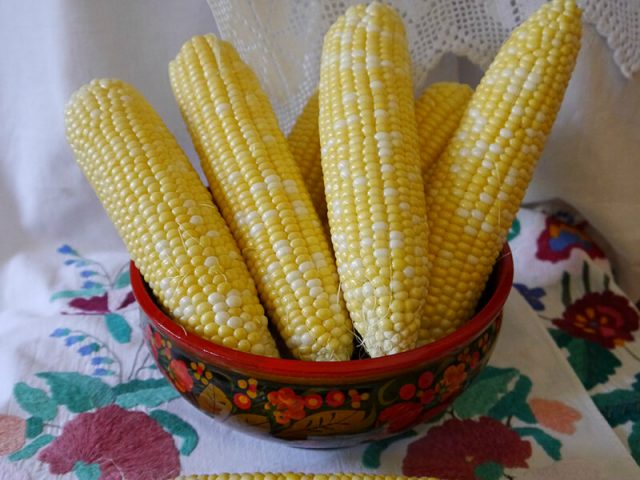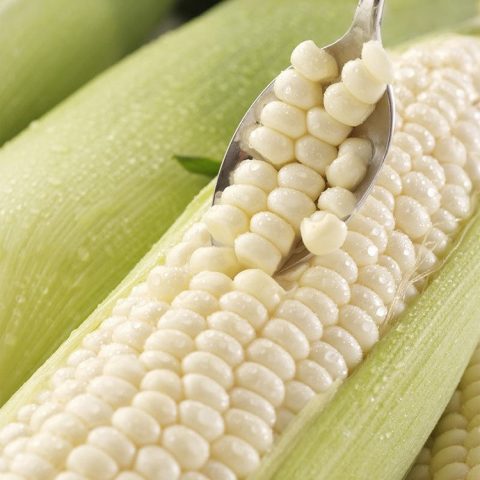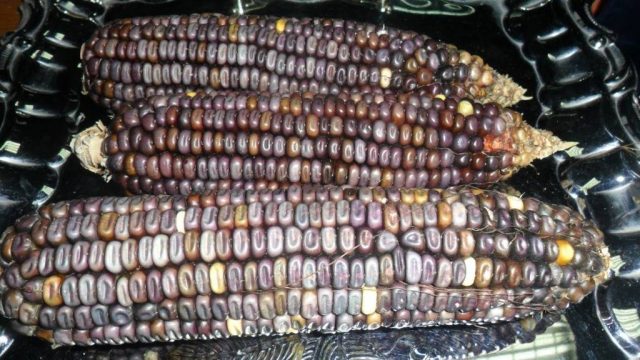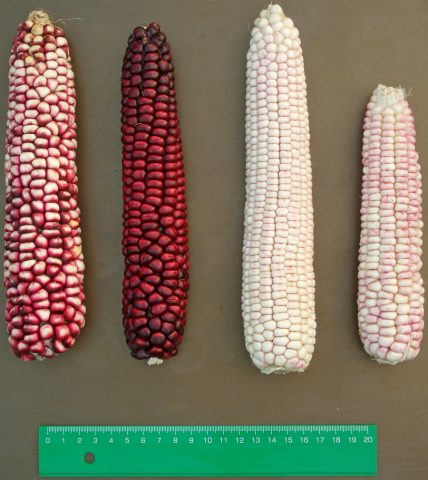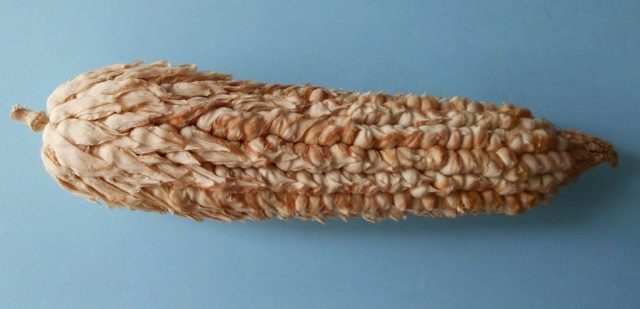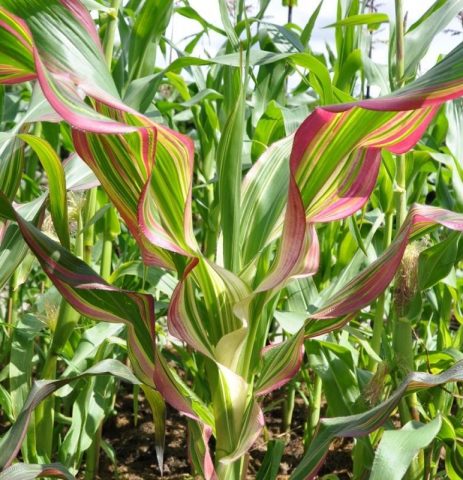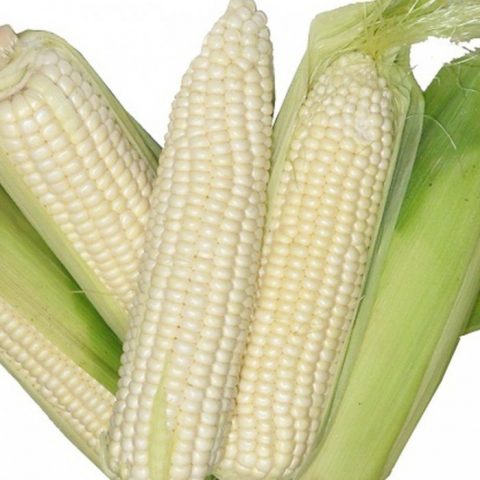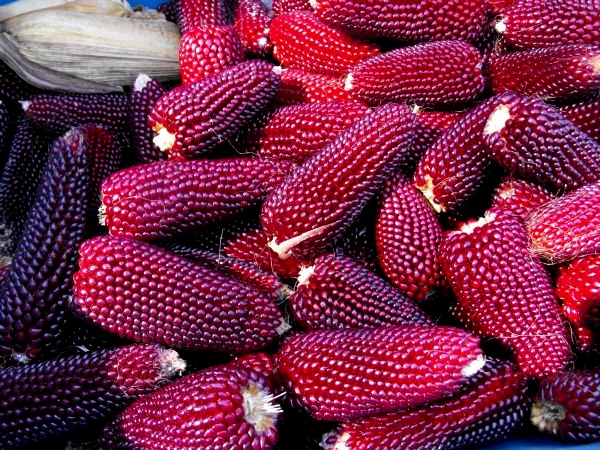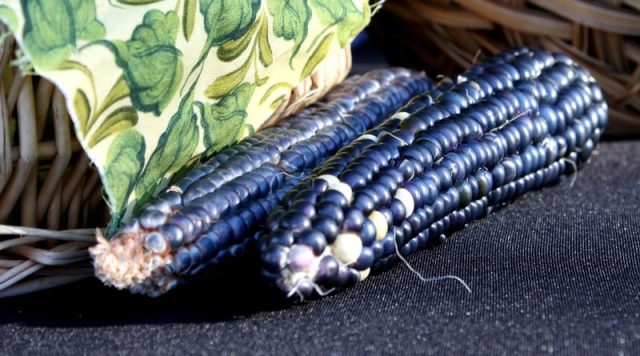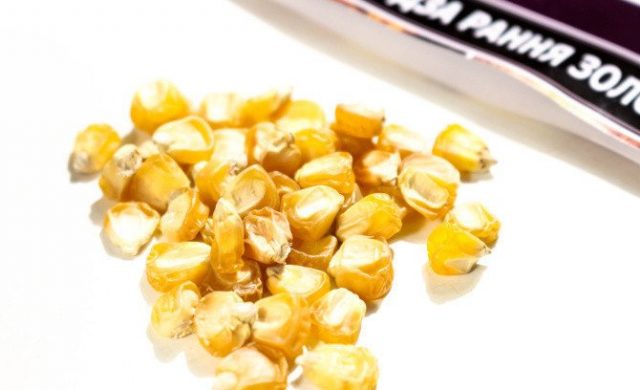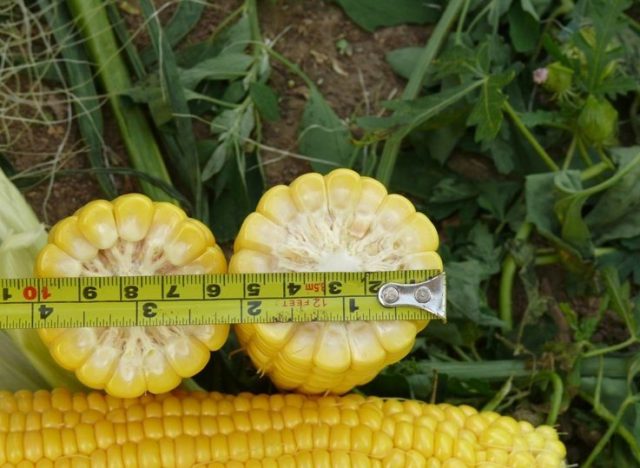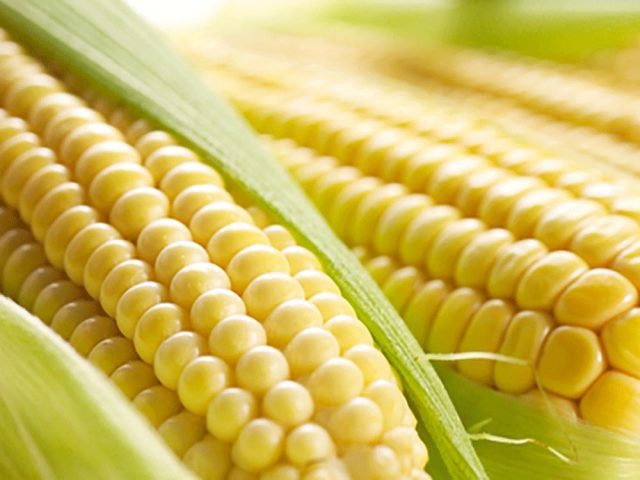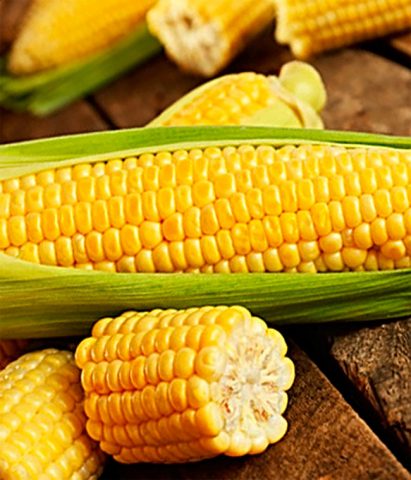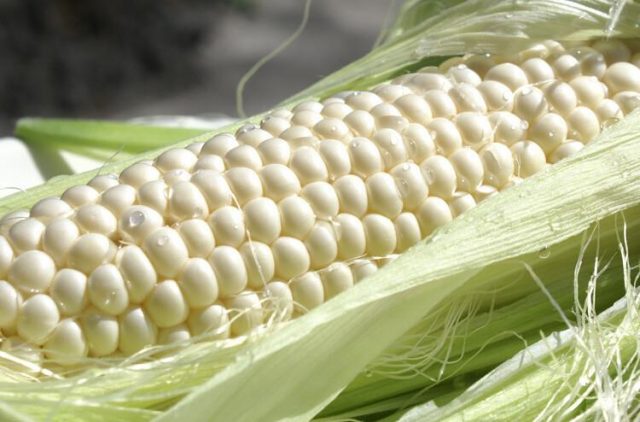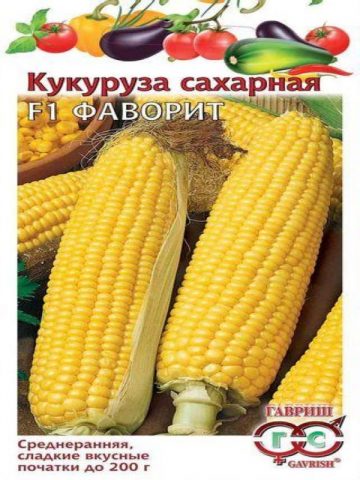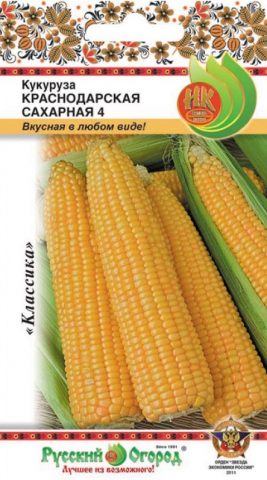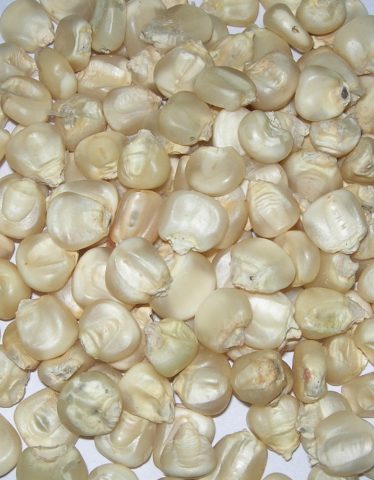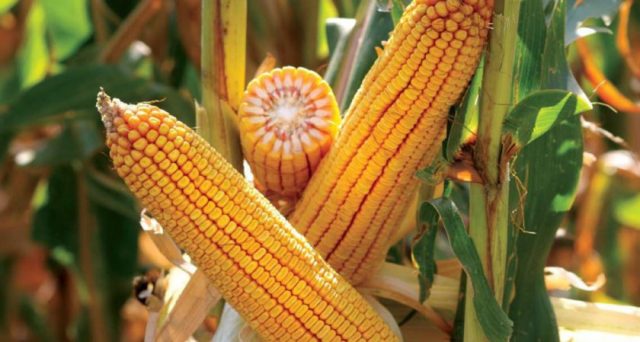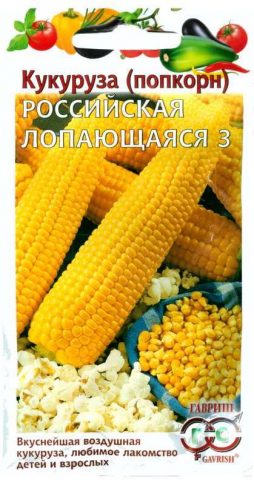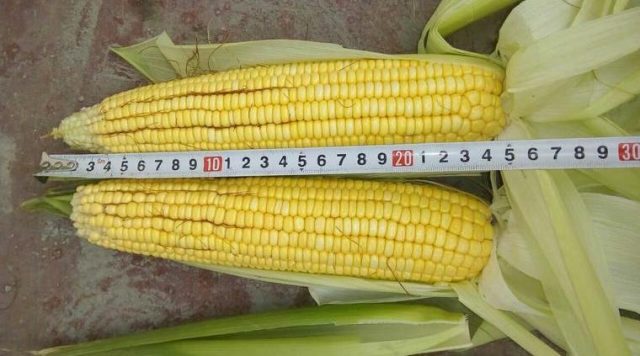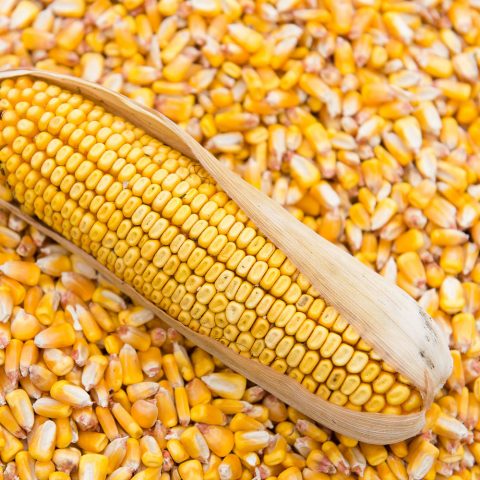Content
Corn varieties, a plant native to the American continent, were primarily developed in the 20th century for the feed and sugar varieties of this cereal. On household plots, predominantly early sugar varieties are grown. Corn kernels are used boiled, as well as for preservation.
Types and photos of corn
Corn is one of the tallest annual herbaceous grasses, reaches from 1.5 to 3 m in height, forms an average of 2 ears on the stalk. The length of the cobs is from 10 to 30 cm, the weight is 200-500 g. On the cobs there are from 200 to 800 and more grains, usually yellow, although there are many species and varieties with white and red seeds. In the homeland of the giant cereal, in America, various cultivars with blue and black grains are grown.
Waxy
Among the thousands of varieties of corn, there is a species with a limited number of breeding developments - waxy corn. The variety originated from hybrids from the United States, grown in China in the early 20th century, due to the emergence of a recessive wx gene as a result of an accidental natural mutation. Now the manifestation of this gene is noted in other countries among the plantings of fodder maize. The outer part of the grain is matte, which resembles wax, giving the name to the new species. The main difference between all varieties of this species is the high content of powdery substance, from which high-quality starch is obtained. There is a high increase in cattle and small ruminants if grains of this type are included in the diet. They do not have the same effect on other animals.
Young ears are tasty, they are eaten cooked. The species is widespread throughout China, but such corn is also cultivated in Russia. Planting waxy maize should be far away from other species as the recessive gene affects other varieties of the crop. Its influence is reflected in the fragility of plants, susceptibility to disease, reduced yield and degeneration. Waxy maize must also be stored separately and not mixed with other varieties.
Toothed or semi-toothed
Toothed are the most common corn varieties in Russia, which number in the hundreds. The grains are distinguished by a small depression at the top. Semi-toothed corn was obtained by crossing the flint and dentate groups. Almost all dentate and semi-dentate varieties ripen late, by mid-autumn.
These forage species are grown:
- for feed grain;
- as a raw material for the food industry;
- in the phase of milky-waxy maturity, the ears are also boiled, but mostly they are devoid of sweet taste.
Siliceous
This type of corn is famous for its high starch and protein content. Young, rounded grains of pleasant sweetish taste. Ripe seeds are hard and glossy. They are yellow and white in color, as well as dark shades.Many entrepreneurs prefer flint corn varieties for planting because of their early maturity.
Starchy or mealy
The name of the species is eloquent: grains with a high, up to 80%, starch content are used to make flour, molasses, and alcohol. The culture is common in warm regions of North America and the South American continent.
Bursting
The properties of this type of corn are due to the large amount of protein and grain structure:
- very hard and thick outer layer;
- a soft thin layer of tissue around the embryo.
When heated, the evaporated moisture ruptures the shell. The cobs are small. Small popcorn varieties have multi-colored, rounded, or sharp-topped grains.
Filmy
In this species, each grain on the cob is covered with spikelet scales, like in a spikelet of all cereals. Due to the nature of the structure, seeds and green plants are used only for forage. New varieties of hulled corn are not being developed.
Japanese
One of the decorative varieties of cereals, used as a picturesque, but extremely fragile hedge. The species grows up to 1-2 m in height, the stems are weakly bushy. The decorative value is in the multi-colored longitudinal stripes on the leaves of the culture, which come in a wide range - from white, yellow, to pink and reddish. The species is considered one of the varieties of mini corn. Eat young ears of milk ripeness.
White corn
The usual color of the crop grain is yellow, and for a change, interested summer residents grow varieties with white seeds. Many species have this shade, but the most popular corn on the cob is the white sugar group. The species is distinguished by delicate and tasty sweetish grains in the phase of milk maturity, as well as early maturity. The ears can be eaten in 75-100 days from the moment of germination. Notable varieties with white seeds:
- Snow White;
- Medunka;
- The Snow Queen;
- The little Mermaid;
- Snow avalanche;
- White cloud;
- Eskimo.
Red corn
A burgundy hue is inherent in grains of various types. Its presence in the plant reports a high content of antioxidants. Therefore, in recent years, many gardeners have been striving to plant varieties of red corn, as in the photo.
Blue or purple corn
Grains of blue, purple or almost black corn are also rich in antioxidant properties. Varieties of different types with grains of dark color have long been grown in Latin America. Now blue corn under the brand of the legendary Hopi Indian tribe has begun to spread around the world. From seeds with a particularly low glycemic index and high protein content, delicious products and dishes are obtained: tortillas, porridge, drinks, chips.
The best early and mid-early varieties and hybrids
Breeders have developed many early varieties of several of the most common varieties:
- sugar;
- odontoid;
- siliceous;
- starchy;
- waxy.
One of the earliest maize varieties is Daenerys F1 (Barcelona F1), which ripens for boiling in 65-68 days. Yellow grains contain up to 22% sugars. But there are many other plants with similar properties.
Early golden
Cobs 16-19 cm long are ready for processing in 90 days. The plant is not tall, it is not very susceptible to fungal infections. The grains are canned and frozen.
Dobrynya
One of the most famous early ripening varieties of corn, resistant to rust, wilting, mosaic, ripens for culinary processing in 68-75 days. Sugar corn kernels are very sweet and yellow. They are also used for the production of starch, flour, cereals.
Sundance
Early low-growing corn matures in 72-90 days. The stem grows up to 1.5 m, yellow cobs of medium size, tasty.Used for blanks and cooking.
Jubilee
A high-yielding variety that is not very susceptible to diseases is sometimes referred to as a mid-season group. The ripening period is from 80 to 100 days, which largely depends on weather conditions. The stalk is high, more than 2 m, the cobs are large, sweet and tasty in the phase of milk maturity.
Landmark
A hybrid of a sugar type with yellow large ears ripens at 70-73 days of development. The plant is resistant to infection with fungal diseases. Seeds for universal use.
The best mid-season varieties and hybrids
Medium-ripening corn on the cob is often used in agriculture for fresh green forage for livestock and for silage. Vegetables are suitable for cooking and preparation.
Spirit
Resistant to lodging, viral and fungal infections, the Spirit hybrid from Syngenta gives a high yield of large ears. A yellow seed for universal use, ready to cook in 85-99 days.
Pioneer
Simple hybrids of the well-known company of the same name from the USA give only one large ear. The variety is low, with a strong stem, yellow grains, which are ready for cooking after 105-110 days of development. The plant is drought-resistant, high-yielding.
Syngenta
The hybrid from Holland is highly productive, ready for harvesting in the milk phase in 105-109 days. Stems up to 1.7-1.8 m, with selected cobs. The variety is not very susceptible to infections. Sturdy plants are often grown under agrotextiles for early production.
Sweetstar
Syngenta's sugar corn hybrid is recommended to be sown in March for early production. Stems up to 2-2.1 m, ears over 20 cm. The variety is resistant to a number of pathogens.
Pearl
A hybrid from Transnistrian breeders creates 2 stepsons and 2 medium-sized ears. Bright yellow grain contains up to 5% sugars and 7% starch. A variety of universal use.
Favorite
Sweet corn Favorite F1 is medium-sized, up to 1.5-1.7 m, ripens in 80 days. Productivity is high, yellow large seeds are sweet, elongated in shape.
Krasnodar
The maize of the sugar group is low, up to 1.6 m, drought-resistant. Medium-sized yellow cobs. It ripens 95-100 days after germination.
The most productive late-ripening varieties and hybrids
According to the characteristics of varieties and hybrids of sugar maize, which ripen in 3.5-4 months, most of the plants are tall and productive, with large fruits.
Ice nectar
The high-yielding hybrid bears fruit with creamy white grains, very sweet and tasty in the milk phase. Speaks by 135-140 days of development. Stems up to 1.8 m high.
Polaris
The weight of the fruits of the Polaris variety, bred in Transnistria, reaches over 300 g. The drought-resistant plant is high, more than 2 m. The stems are strong, do not linger.
Bashkirovets
Massive ears weigh 350 g or more. Tall plants reach more than 3 m. The variety is productive and resistant.
Russian bursting
The variety ripens on the hundredth day of development. The seeds are used as raw materials for popcorn and flakes.
Megaton
The hybrid is rather mid-late, technical maturity begins from day 85. Ripening may be delayed due to unfavorable weather. The variety is tall, with massive ears, immune to many diseases. The appointment is universal.
The best varieties of feed corn
Zoned varieties are grown in different regions. Late-ripening, ripening in autumn, are considered high-yielding. Among agronomist experts, there is an opinion that in years with favorable weather and sufficient rainfall, teeth-like species show themselves better. Siliceous-toothed varieties that ripen a little earlier and are more resistant to droughts, provide yields for farms in unfavorable years. Since weather prediction is not always accurate, farmers are advised to sow fields in a proportion of 60-70% with teeth-like varieties, and leave the remaining 30-40% for the second group.
The Pioneer varieties have proven themselves well over the decades:
- resistant to weather conditions;
- unpretentious to soils;
- disease resistant;
- with large elongated grains;
- high in starch and protein.
High-quality products from seed growers from the Kuban, as well as from many foreign companies that enter our market:
- Ross;
- Mashuk;
- Korn;
- Frame;
- Voronezh;
- Phenomenon;
- Thompson Prolific.
Conclusion
Corn varieties are distinguished by their variety and purposeful use. For household plots, varieties of sugar species are more often acquired, early, mid-season or late. When buying seeds, they study whether the cobs are intended for use in the milky ripeness phase or for popcorn.
